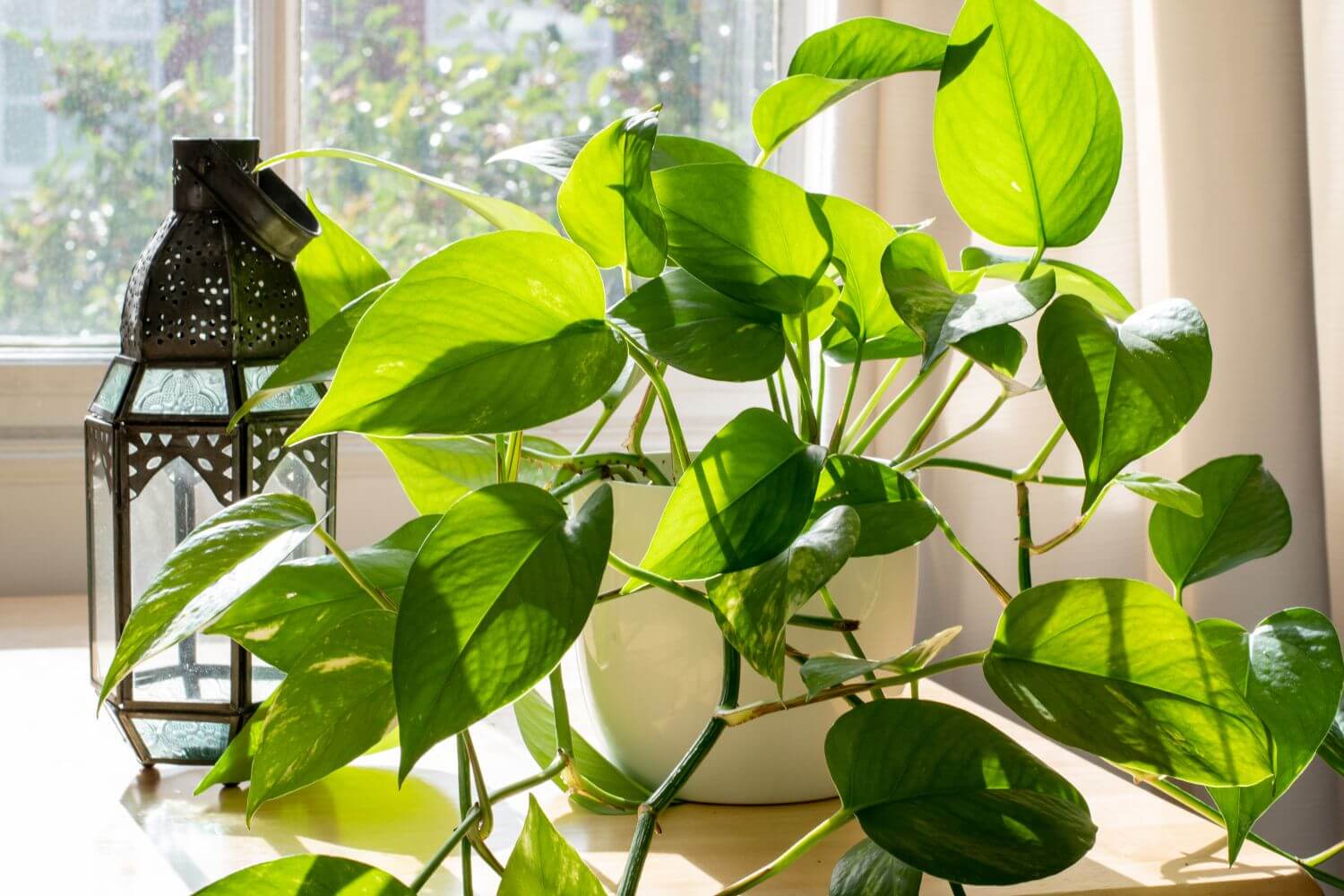
Pothos (Epipremnum aureum) remains one of the most beginner-friendly houseplants, offering ease of care and versatility in any home setting. Originating from the Solomon Islands in the South Pacific, this tropical vine adapts effortlessly to various environments and can be trained to climb or trail elegantly from pots or hanging baskets. Its resilience and low-maintenance nature make it an indispensable addition to any indoor plant collection.
Pothos plants are renowned for their rapid growth, often extending 12 to 18 inches in a single month. Featuring heart-shaped green leaves that may boast variegation in white, yellow, or pale green, these draping vines add both aesthetic appeal and a touch of greenery to indoor spaces. However, it’s important to note that pothos plants are toxic to pets, so caution is advised for households with furry friends.
Care Tips for Pothos
1. Lifespan and maintenance
Pothos plants typically thrive for five to 10 years with minimal, consistent care. However, with proper attention, they can live even longer, enriching your indoor environment for years to come.
2. Light requirements
Pothos plants exhibit versatility in their light preferences, tolerating both sun and shade. They can flourish in low-light areas or under fluorescent lighting, although they prefer bright, indirect light when grown indoors. Excessive shade may cause variegated varieties to lose their leaf patterns, but relocating them to brighter spots usually restores their vibrancy.
3. Soil considerations
Plant pothos in well-draining potting soil or a specialized aroid mix to promote healthy growth. Neutral to slightly acidic soil with a pH ranging from 6.1 to 6.8 is ideal for these plants.
4. Watering Guidelines
Maintain a watering schedule of once every one to two weeks, adjusting frequency based on seasonal variations. Allow the soil to dry out completely between waterings to prevent root rot, a common issue caused by overwatering. Signs of underwatering include drooping leaves, while black spots or sudden wilting indicate excessive moisture.
5. Temperature and Humidity
Keep pothos plants in temperatures above 50°F, preferably ranging between 65°F and 75°F. While they thrive in high-humidity environments, they can adapt to lower humidity levels. Enhance humidity levels by placing them in naturally humid areas like bathrooms or grouping them with other tropical plants.
6. Fertilization Routine
Pothos plants do not require heavy fertilization but benefit from occasional feeding during the growing season. Apply a balanced houseplant fertilizer monthly in spring and summer, withholding fertilization during winter dormancy.
Types of Pothos
Pothos hybrids boast diverse leaf variegation patterns, ranging from white and yellow to light green patches amidst deep green foliage. Notable varieties include ‘Marble Queen’, ‘Pearls and Jade’, ‘Neon’, and ‘Silver Satin’, each offering unique aesthetic appeal and growth characteristics.
Pruning Techniques
While pruning isn’t essential for pothos plant health, occasional trimming can enhance their appearance. Use sharp, sterile cutting tools to trim back overgrown vines, promoting bushier growth and maintaining desired shape. Pruning can be done throughout the growing season but should be avoided during dormancy.
Propagation Methods
Propagating pothos plants is a straightforward process, often accomplished through stem cuttings rooted in water. Follow simple steps, such as selecting healthy stems, removing lower leaves, and placing them in water until roots develop. Once rooted, transplant cuttings into pots with well-draining soil, ensuring bright indirect light and adequate moisture.
Potting and Repotting
As pothos plants mature, they may outgrow their containers, exhibiting signs of root-bound conditions. Repot them into slightly larger containers with fresh potting soil to encourage continued growth and vitality. Consider terracotta pots for enhanced moisture regulation, especially in low-light environments.
Common Issues and Solutions
Despite their resilience, pothos plants may encounter pests such as spider mites, whiteflies, and scales, along with diseases like bacterial leaf spots and root rot. Address infestations promptly with natural remedies or insecticidal soap, and adjust watering practices to prevent soil-related issues.
Frequently Asked Questions
Is pothos a good indoor plant?
Pothos is an excellent indoor plant suitable for beginners and experienced enthusiasts alike due to its low light requirements, pest resistance, and adaptability to various conditions.
Why is pothos called the devil’s ivy?
Pothos earned the moniker “devil’s ivy” due to its robust nature and ability to thrive in adverse conditions, symbolizing resilience and tenacity.
Should Pothos hang or climb?
Pothos can be grown as either a hanging or climbing plant, depending on personal preference and available space. They thrive in hanging baskets or when trained to climb on supports or trellises, adding greenery to any indoor setting.